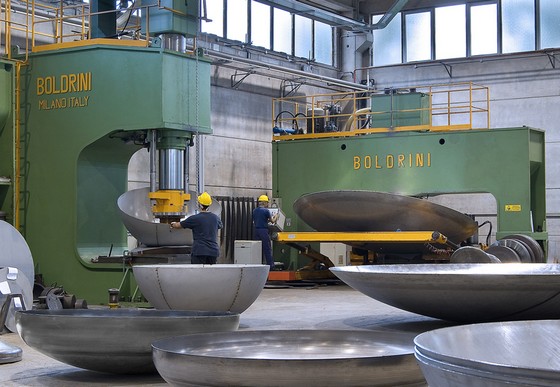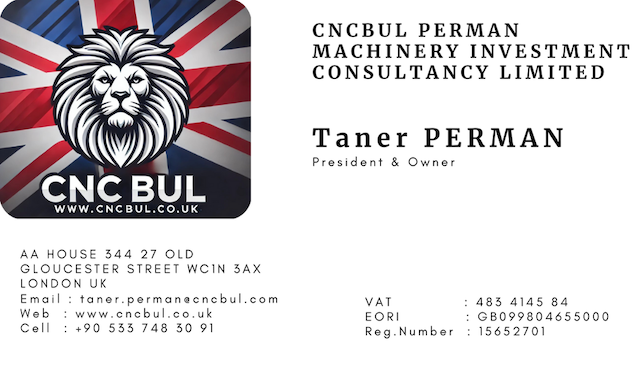04/09/2024
What is DISHING PRESS Machine?
A Dishing Press Machine is a specialized piece of industrial equipment used primarily for forming and shaping metal plates into concave or convex shapes, often referred to as “dishes” or “domes.” These machines are commonly used in industries such as oil and gas, shipbuilding, pressure vessel manufacturing, and chemical processing, where large, rounded metal components are needed.
Key Functions of a Dishing Press Machine:
- Forming Metal Plates: The primary function is to form flat metal plates into curved shapes, typically using a combination of pressing and heat.
- Hydraulic Pressure: Dishing press machines often use hydraulic systems to exert high pressure on the metal, shaping it according to a die or mold.
- Cold or Hot Forming: Depending on the material and the desired shape, the machine may perform cold or hot forming. Hot forming involves heating the metal plate to make it more malleable.
- Large-Scale Operations: Dishing presses are designed for large metal components, such as tank heads, domes, and end caps for pressure vessels.
Parts of a Dishing Press Machine:
- Hydraulic Cylinder: Provides the pressing force required to shape the metal.
- Forming Die: A shaped mold that gives the metal its final form.
- Press Frame: A robust structure that supports the machine and handles the force exerted during pressing.
- Control Panel: Allows operators to control pressure, temperature (if hot forming), and timing.
Types of Dishing Press Machines:
- Hydraulic Dishing Press: The most common type, using hydraulic force to press the metal into shape.
- Mechanical Dishing Press: Uses mechanical force through levers or gears to achieve the same goal, though it is less common for large-scale operations.
Applications:
- Pressure Vessels: Used to manufacture dome-shaped ends for storage tanks and pressure vessels.
- Shipbuilding: For creating curved sections of ships’ hulls.
- Oil & Gas Industry: To produce large domed metal parts for storage and processing facilities.
Detailed Working Mechanism of a Dishing Press Machine
- Plate Positioning and Clamping:
- The metal plate (usually made of steel, stainless steel, aluminum, or other alloys) is placed on the press bed and aligned properly.
- Depending on the complexity of the shape, multiple stages of pressing may be needed.
- The plate is clamped securely to avoid movement during the pressing process.
- Pressing Process:
- The dishing machine uses hydraulic cylinders to apply force to the metal plate. This force is applied gradually, usually in several stages, to prevent material fatigue or cracking.
- In cold forming, the press uses brute force to shape the metal. In hot forming, the plate is heated before pressing to make it more pliable.
- Dishing Dies (Molds): The dies or molds come in different shapes, such as hemispherical or elliptical, depending on the required form of the metal.
- The top die exerts downward pressure while the bottom die supports the plate, ensuring precision in shaping.
- Multiple Passes:
- In some cases, the dishing process involves several passes through the press, each time applying greater pressure or using progressively smaller dies to refine the shape.
- This incremental pressing prevents damage to the metal and allows for the creation of deeper, more complex curves.
- Edge Trimming and Finishing:
- After the dishing process is complete, the edges of the formed dish may need trimming or machining to meet the exact specifications.
- The surface is often polished or heat-treated to remove imperfections or stresses from the forming process.
Types of Forming Techniques Used in Dishing Presses
- Cold Dishing:
- Suitable for thin plates and simpler shapes.
- Offers precision but may require additional forming techniques for complex shapes.
- Often used for materials with high tensile strength that can withstand cold working.
- Hot Dishing:
- Ideal for thicker plates or more intricate designs.
- The metal plate is heated to a certain temperature to make it more ductile, allowing for easier manipulation without the risk of cracking or warping.
- More common when working with high-strength alloys or when deep, complex shapes are required.
Key Specifications of a Dishing Press Machine
- Pressing Force: Ranges from several hundred tons to over 1,000 tons, depending on the size and thickness of the plates being formed.
- Plate Thickness: Can handle plates from a few millimeters thick to several centimeters thick, depending on the machine’s capacity.
- Forming Diameter: The maximum diameter of the plate that can be formed is usually in the range of 1–10 meters, although larger custom machines can form much larger plates.
- Stroke Length: The distance the press can travel, which affects the depth of the dish formed.
- Automation: Many modern dishing press machines are equipped with CNC (Computer Numerical Control) systems that allow for precise control of the forming process, including pressure, temperature, and die positioning.
Applications Across Industries
- Pressure Vessel Manufacturing:
- One of the most common uses for dishing press machines is in the production of tank heads for pressure vessels.
- These pressure vessels are used in industries such as oil and gas, petrochemicals, food processing, and water treatment.
- Tank Heads are typically spherical or elliptical in shape, which ensures that the pressure is evenly distributed across the surface, reducing the risk of rupture.
- Oil and Gas Industry:
- In the oil and gas sector, dished heads are used in storage tanks, separators, and heat exchangers. The curved shape allows these components to withstand high pressures and temperatures.
- The domes formed by dishing presses help ensure the integrity of the vessel, particularly in high-stress environments.
- Shipbuilding:
- Dishing press machines are used to create curved hull sections and bulkheads for ships.
- These curved components are essential for the hydrodynamics of ships, ensuring that they can move efficiently through water while maintaining structural integrity.
- Food and Beverage Industry:
- Stainless steel dished heads are used in food processing equipment, such as fermentation tanks, distillation columns, and storage containers.
- These dished heads help ensure sanitary conditions, as they prevent material from accumulating in corners and are easier to clean.
- Chemical Processing:
- The chemical industry uses large reactor vessels that often require domed or dished heads to contain high-pressure reactions safely.
- The precision and strength provided by dishing press machines ensure that these vessels can operate under extreme conditions.
Benefits of Using a Dishing Press Machine
- High Precision: Dishing presses provide high accuracy in forming complex shapes with consistent thickness and curvature.
- Durability of Formed Parts: The press ensures that the material retains its strength, even after being shaped, making it ideal for pressure-sensitive applications.
- Cost-Efficiency: With modern hydraulic and CNC systems, the process becomes highly efficient, reducing material waste and labor costs.
- Versatility: These machines can form a wide range of materials, including steel, stainless steel, and high-strength alloys, making them suitable for various industries.


